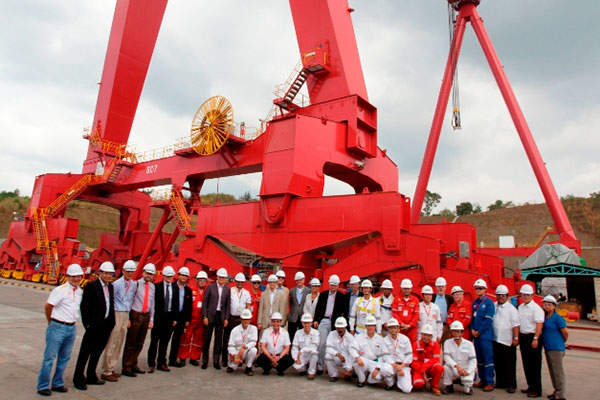Malampaya Phases II and III are the next two stages of the Malampaya Deep Water Gas-to-Power project, which are being implemented to maintain the existing level of gas production from the Malampaya gas field.
Malampaya Phase II (MP2) started in August 2011 and was completed in 2013 while Malampaya Phase III (MP3) is scheduled for completion in 2015.
MP2 primarily involved the development of two additional production wells at the field and MP3 involves the installation of a depletion compression platform (DCP) bridge-linked to the existing platform. The DCP was installed in early 2015 while the bridge linking works are in progress.
The two phases are estimated to cost $1bn in total. Refurbishment works on the existing shallow-water platform are being performed simultaneously. MP3 is expected to generate approximately 1,400 direct new jobs for Filipinos.
The development of the Malampaya field is a joint undertaking of the government and the private sector. It is led by the Philippine Department of Energy (DOE) and developed and operated by Shell Philippines Exploration (SPEX – 45%) on behalf of its joint venture partners Chevron Malampaya (45%) and the Philippine National Oil Company – Exploration Corporation (PNOC EC – 10%).
Malampaya Gas field location and reserves
The Malampaya gas field, located offshore northwest Palawan at a water depth of 820m, started production in 2001. It fuels three combined-cycle gas power stations, namely the Santa Rita (1,000MW), San Lorenzo (500MW) and Ilijan (1,200MW), meeting about 30% of Luzon Island’s power generation requirements.
The gas field is estimated to hold recoverable gas reserves in the range of 3.08 trillion cubic feet (tcf) to 3.29tcf. The field produces approximately 380 million standard cubic feet per day (MMscfd) of natural gas and 15,000 barrels a day of condensate. The cumulative production as of June 2013 reached 1.3tcf.
Details of Malampaya development phases II and III
As part of the MP2, a calm buoy for transportation of condensate was installed at a water depth of 75m. It transfers the condensate between 40,000dwt and 110,000dwt tankers via a 2.5km-long and 24in-diameter pipeline.
The DCP is a self-installing platform with an inbuilt jacking system. It has a production capacity of five million standard cubic feet per day (MMscfd) of gas. Its topsides alone weigh approximately 4,300t, whereas the overall loadout weight of the new platform is approximately 12,000t.
The seabed foundations for the installation of the DCP’s 80m legs were prepared using 50,000t to 70,000t of rock and 10,000t of iron ore. The platform is specially designed to withstand typhoons and earthquakes.
Contractors involved with the Malampaya offshore gas field development
The engineering, procurement and construction (EPC) support services for Phase III are being provided by Flour. The company was also involved in performing the front-end engineering and design (FEED) for Phase III.
The detailed design of the DCP’S substructure was performed by Arup using its concept elevating (ACE) platform solution. Arup also performed the seismic hazard assessment, site response studies, and liquefaction assessments for the project and developed the concept for the 43m bridge link connecting the platform to the existing platform.
The new platform was built at Keppel’s Subic Shipyard. A new 1,500t gantry crane, the biggest in South East Asia, was specially constructed to assist the fabrication and assembly works.
The contracts for seabed preparation works including the transportation and installation of the DCP platform and the bridge link were awarded to Boskalis.
DHI Group was involved in conducting the tow and installation/touchdown tests including tests to determine current and wave-induced velocities around the DCP using computational fluid dynamics (CFD) modelling using its proprietary OpenFOAM software.
Prosafe’s Safe Astoria moored semi-submersible accommodation vessel is providing accommodation support for the Malampaya phase III. The calm buoy, installed at a water depth of 75m, was supplied by Sofec.








